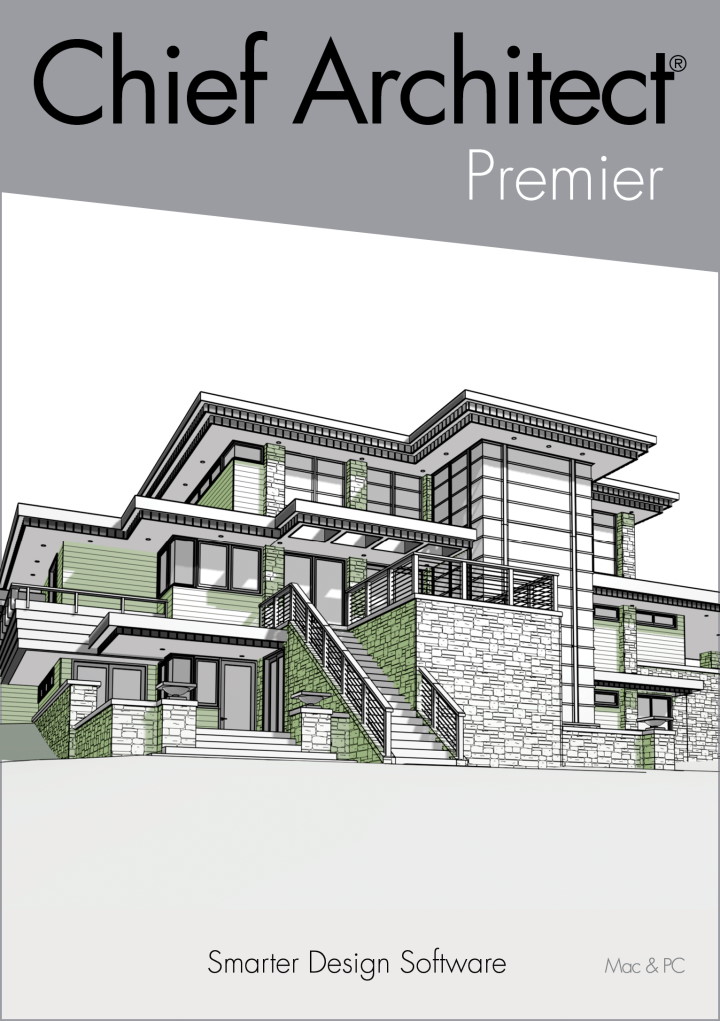Architect-Approved Home Renovation Ideas
Architect-Approved Home Renovation Ideas
Blog Article
Understanding the Diverse Job Paths Available for Aspiring Architect
As an aspiring Architect, you have a globe of occupation courses waiting for you. Each course supplies distinct difficulties and opportunities to apply your creativity and technological knowledge. Whether you're attracted to conventional architecture or the subtleties of sustainable design, there's a specific niche that aligns with your passions. Understanding these varied choices can form your professional journey, but which direction will you select to explore initially?
Typical Design: Designing Frameworks and structures
Traditional architecture concentrates on making structures and frameworks that mix performance with visual appeal. Your styles can mirror cultural heritage, showcasing neighborhood practices while meeting modern needs.
You'll create skills in drafting, model-making, and site analysis, enabling you to imagine and interact your ideas successfully. Engaging with customers, you'll need to understand their vision and translate it into practical layouts.
Furthermore, constructing codes and sustainability methods are necessary in your work, ensuring your structures are eco friendly and risk-free. As you expand in your job, you'll discover possibilities in residential, business, or also remediation tasks, each offering special difficulties. Accepting traditional architecture leads the way for a meeting career that pays tribute to the past while forming the future.
Urban Preparation: Shaping Areas and Public Spaces
As a hopeful Architect, you can play a vital function as a city planner, changing exactly how areas operate and communicate. By utilizing community involvement approaches, you'll ensure that citizens have a voice fit their environment. Plus, incorporating sustainable layout concepts will assist create spaces that not just meet today's needs yet likewise secure the future.
Role of Urban Planners
While several may assume of engineers as the single enthusiasts behind structures, urban organizers play a crucial duty in forming the more comprehensive landscape of neighborhoods and public areas. By collaborating with various stakeholders, you'll help design parks, transport systems, and property locations that advertise social interaction and availability. Your proficiency in spatial design and community characteristics allows you to picture future development while protecting cultural heritage.
Community Involvement Strategies
Reliable neighborhood interaction strategies are important for city planners to guarantee that the voices of citizens are listened to and valued in the planning procedure. To foster purposeful discussion, you ought to prioritize open online forums and workshops where area members can express their concepts and concerns. Usage surveys and social media sites to reach a wider audience, making certain diverse viewpoints are consisted of. Working together with neighborhood companies can enhance trust fund and help with much deeper links. It is necessary to offer clear details about decision-making processes and suggested tasks, enabling homeowners to really feel enlightened and empowered. By actively paying attention and incorporating feedback, you'll produce areas that reflect the neighborhood's requirements, eventually leading to even more lasting and successful metropolitan settings. Embrace openness and continuous discussion for enduring effect.
Lasting Layout Principles
When creating metropolitan rooms, including lasting style concepts is critical for creating settings that flourish both ecologically and socially. Consider integrating eco-friendly areas, like gardens and parks, to enhance biodiversity and enhance air high quality.
Designing with water conservation in mind is additionally vital-- think regarding rain yards and absorptive surfaces to manage stormwater. Entailing neighborhood participants during the planning procedure assurances that the areas you develop meet their needs and urge social interaction. By embracing these principles, you'll add to vibrant, lasting urban landscapes that profit everyone.

Landscape Architecture: Creating Lasting Outside Environments
As you discover landscape design, you'll discover vital design concepts that develop useful and attractive outdoor areas. Sustainable practices play a crucial function in making sure these atmospheres flourish while decreasing ecological influence. Plus, you'll find a selection of job opportunities that permit you to make a genuine difference in exactly how people interact with nature.
Layout Concepts in Landscape
Understanding layout concepts in landscape architecture is essential for developing sustainable exterior settings that harmonize with nature. You'll need to consider elements like equilibrium, percentage, and range to guarantee your designs really feel cohesive and welcoming. Integrating native plants not just enhances biodiversity yet likewise minimizes water use, making your landscape resilient. Believe concerning the flow of area and just how individuals connect with it; paths and seating locations need to invite exploration and relaxation. Additionally, take note of seasonal modifications, developing with products that enhance the environments year-round (Architect). By prioritizing sustainability and aesthetic appeals, you can create exterior rooms that improve the community and promote wellness. Embracing these concepts will set a strong foundation for your job in landscape style.
Sustainable Practices Overview
Lasting techniques in landscape design not just focus on visual appeals but additionally focus on eco-friendly health and source preservation. By integrating indigenous plants, you boost biodiversity and reduce the need for chemical fertilizers and pesticides. Implementing effective watering systems assists conserve water and minimizes runoff, securing neighboring communities. You can create spaces that promote soil wellness, such as practicing and using natural products permaculture principles. Furthermore, integrating green infrastructure, like rainfall gardens and permeable pavements, aids in stormwater monitoring and lowers urban warmth. You contribute to a healthier earth and offer areas that foster neighborhood connection when you create exterior settings with sustainability in mind. Eventually, these methods ensure your layouts profit both people and the atmosphere for many years ahead.
Occupation Opportunities Exploration
With a strong foundation in lasting techniques, landscape design provides a selection of career courses that permit you to make a purposeful impact on the setting. Urban coordinators often collaborate with landscape architects to develop environment-friendly spaces in metropolitan setups, enhancing city livability. If you're passionate concerning education and learning, think about ending up being a landscape style educator, motivating future generations.
Sustainable Design: Concentrating On Eco-Friendly Practices
As you explore your profession in architecture, welcoming eco-friendly techniques can establish you apart in an affordable area. Lasting design concentrates on developing structures that decrease ecological influence while enhancing resident well-being. By incorporating eco-friendly products, energy-efficient systems, and lasting structure techniques, you'll add to a greener future.
Begin by getting expertise of eco-friendly accreditations like LEED or BREEAM, which can strengthen your credentials. Think about exactly how natural light, air flow, and thermal effectiveness can maximize layout. Team up with engineers and environmental specialists to innovate remedies that lower waste and save resources.
Don't forget the relevance of area participation-- engaging neighborhood stakeholders can inspire designs that balance with the atmosphere. As customers significantly prioritize sustainability, your know-how in environmentally friendly techniques will not only bring in tasks but also satisfy your passion for responsible design. Embrace this critical aspect of the career, and view your occupation grow.
Historical Conservation: Shielding and Bring Back Cultural Heritage
While you begin on your building journey, take into consideration the vital duty of historical conservation in keeping our cultural heritage. This area concentrates on the security and repair of considerable buildings, sites, and frameworks that tell the tales of our past. By participating in historic preservation, you'll aid secure the building tradition that shapes neighborhood identity.
As a historical preservation Architect, you'll analyze historical relevance and examine the problem of frameworks. You'll work very closely with conservationists and historians to guarantee genuine remediation techniques are used. This career course enables you to blend imagination with study, enabling you to design services that value initial products and craftsmanship.
Your job not just adds to sustainability by reusing existing structures yet also cultivates a sense of pride within areas. Embracing this course will certainly assist you come to be a guardian of history, maintaining the stories and looks that enrich our lives.
Inside Architecture: Enhancing Indoor Spaces
Historic conservation and interior official website architecture both share a dedication to boosting the built atmosphere, yet they concentrate on different aspects. While historical conservation stresses maintaining a framework's historical and social worth, interior style zeroes in on enhancing indoor areas for functionality and appearances.
As an aspiring Architect, you'll discover that interior style enables you to blend creativity with technical abilities. You'll make areas that not just look good but additionally promote convenience and effectiveness. This area includes recognizing how light, color, and products connect within a space, influencing state of mind and use.
You'll service numerous projects, from residential homes to industrial workplaces, ensuring that each setting meets the demands of its residents. By focusing on individual experience, you can transform insides into motivating and practical rooms, making a substantial effect on exactly how people communicate with their surroundings. Embrace the possibility to enhance interior environments and shape the way individuals work and live.
Industrial Style: Combining Performance With Appearances
Commercial design plays an important role in developing products that perfectly mix appearances with capability, ensuring that what you make use of everyday is not only visually enticing yet likewise practical. As an aspiring Architect, you could engage on your own in this area, concentrating on designing everything from furnishings to consumer electronics. Your work includes recognizing user requirements, materials, and making procedures, enabling you to produce ingenious services that boost everyday experiences.
In industrial design, you'll commonly team up with makers, engineers, and marketers, making sure that your designs are not just attractive yet additionally feasible. You'll learn to stabilize form and feature, focusing on use without sacrificing design. By sharpening your skills in laying out, 3D modeling, and prototyping, you'll be well-equipped to bring your concepts to life. This job course offers a dynamic atmosphere where creative thinking fulfills usefulness, making it a fulfilling choice for designers curious about forming the items of tomorrow.
Often Asked Questions
What Educational Credentials Do I Need to Come To Be an Engineer?
To end up being an engineer, you'll require a specialist degree in design, commonly a Bachelor's or Master's. In navigate here addition, you'll have to complete a teaching fellowship and pass the Architect Registration Assessment to practice legally.
Exist Qualification Requirements for Different Architectural Career Paths?
Yes, there're qualification needs for different architectural paths. Architect. You'll require to pass exams, full teaching fellowships, and often pursue specialized training, depending upon your picked emphasis, like landscape style, city style, or historic preservation
What Software Program Skills Are Essential for Architects Today?

How Can I Gain Practical Experience While Examining Design?
You can obtain sensible experience by interning at building companies, joining design competitions, offering for area tasks, or working together with schoolmates on real-world jobs. These chances boost your skills and construct useful links in the market.
What Job Opportunities Exist Outside Typical Architecture Firms?
You can discover numerous task possibilities outside standard design companies, like urban preparation, interior decoration, landscape design, building administration, realty advancement, and even roles in sustainability consulting. Each offers distinct obstacles and benefits.
Whether you're drawn to typical architecture or the subtleties of lasting style, there's a particular niche that lines up with your rate of interests.When designing urban spaces, integrating lasting design concepts is vital for developing settings that thrive both environmentally and socially.As you check out landscape architecture, you'll discover essential style principles that produce practical and lovely outdoor spaces.Understanding layout concepts in landscape design is essential for creating sustainable outside settings that balance with nature.In commercial design, you'll commonly collaborate with designers, news marketing experts, and makers, ensuring that your layouts are not just gorgeous yet also feasible.
Report this page